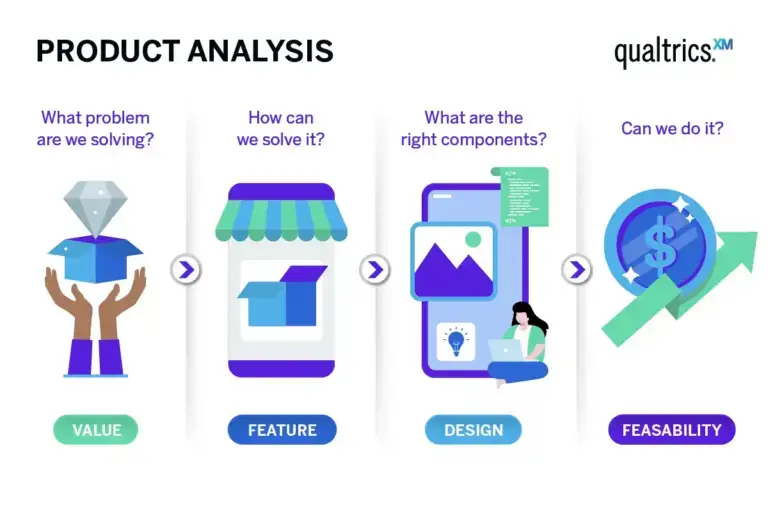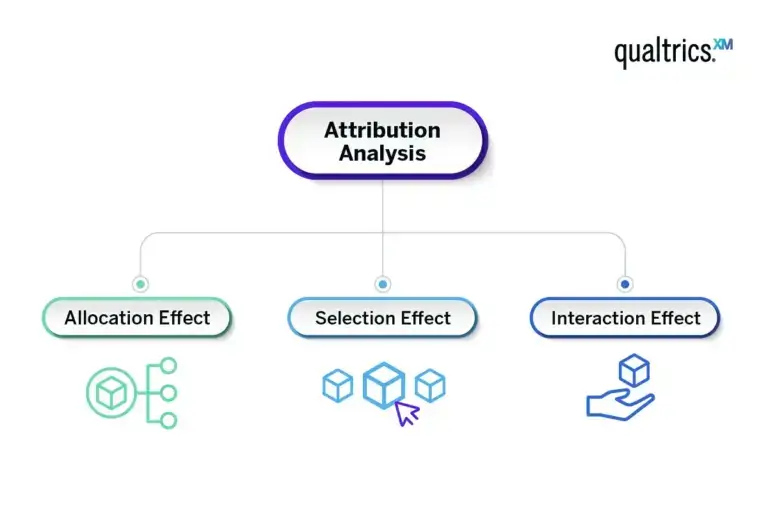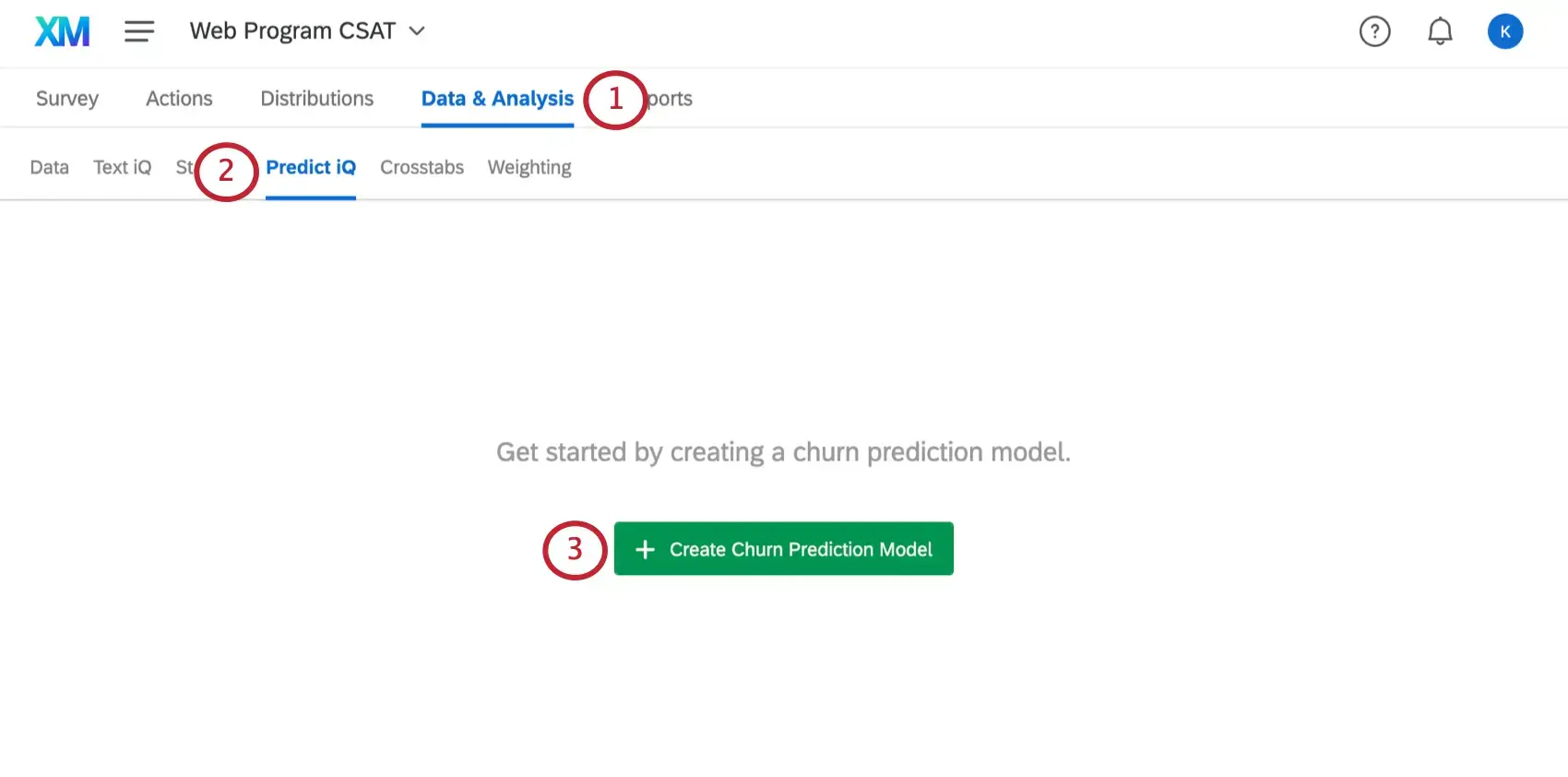This is where product analysis comes in.
Product analysis can provide useful information on everything from customer behavior, to developing marketing strategies to understanding customer perception of your product compared to competitors.
In this guide, we’ll take you through everything you need to know about product analysis, from what it is and how to do it, how to use competitive product analysis, to how you can use specific product analysis software to improve your processes and reach more accurate conclusions.
What is product analysis?
Product analysis is the process of understanding user behavior in regards to your product or service.
Product analytics data is used to determine what kind of user experience your product or service offers, using real customer feedback and behavioral data to inform future product updates or improvements.
Using product analysis, companies are able to make more accurate decisions about products, rather than relying on guesswork or preconceived perceptions about how the product is performing now, and what could make it better.
This can be done during the initial product development stage (getting customer testimonials at different stages of development to help create the final product), through to post-launch, when you can see exactly how users interact with the finished product or service, and make adjustments.
Using real product and user engagement data is the only way companies can paint an accurate picture of how their product is performing and then make changes or update product features based on actual feedback.
It’s a useful tool alongside a competitive product analysis, so you can see how your products are developing in line with your competitors.
Without this information from real customers, there’s no way to accurately know whether changes to a product will make it better.
There are several ways you can assess the ROI of product analysis, both from a cost and revenue perspective, but also from a brand building standpoint.
The simplest way to judge the ROI of product analysis is to compare the costs of development and research against the revenue generated by the product once it’s launched.
For example if it cost you $20,000 to develop the product and use product analysis, and the product generates $100,000 in revenue, then you’ve generated a positive return on your investment.
However, you can also gather data from your target market, such as with customer interviews, to judge the customer experience or to get more detail on your customers’ perception of your product and see how your new products or services are impacting your overall brand position.
For example: Is the service experience generating positive reviews and feedback from customers and delivering the desired results, or is the product quality actually deemed to be poor compared to alternatives, and having a negative impact on your brand?
This is all critical information for your business as a whole, and for product managers in particular to ensure you make accurate and swift decisions about the future of your products and services.
How to do product analysis
Figuring out your product’s position in the market is essential both before launch and during the entire product lifecycle.
Product analysis can help you understand current product performance, where it sits within the marketplace, and what changes you need to make to elevate your product above the competition.
In this section we look at how to do product analysis.
Gather product reviews
The first stage of product analysis is to gather reviews from customers within your target market.
One of the best ways to generate the types of information you need is to use sentiment analysis.
Sentiment analysis essentially uses customer conversations and qualitative data to ask customers what they think about your product.
You should look to get opinions on everything, from the customer experience to customer preferences towards specific features of your product or service.
Sentiment analysis typically assigns three responses (positive, neutral, negative).
This can help you understand where your product is succeeding, what elements customers don’t consider important, (this is important because it might be different to what you’d consider important) and what they deem the negatives.
While your product analysis will likely focus on the negatives so you can plan updates and improvements, it’s just as important to consider the positives of your product, as you don’t want future changes to impact those positive aspects..
Gather competitive product analysis
Once you understand how customers judge your product’s performance, you should carry out a product analysis report on your competitors’ products.
Essentially you want to run the same customer surveys you’ve completed for your products on your competitors’ products to understand customer sentiment.
This will help you assess the areas where your product is considered superior and, for the purpose of future developments, where your competitors’ products might hold the advantage.
You should get specific with your competitive product analysis and look at the features of the products (even the features that are similar to yours).
Your competitive product analysis should also look at your competitors’ pricing strategies, customer demographics and target market, marketing materials – everything.
You should also have your product managers and marketing team analyze brochures, websites, online reviews, sales promos – whatever information you can find to help you understand your competitors and where their products fit against yours.
All of this information can help you find the gaps you could exploit in the future when making improvements to your product.
Product analysis example
Conducting in-depth product analysis should be able to answer some key questions about your product and also help you understand how you can achieve a number of goals (depending on the questions you ask) including:
- What channels should you choose to generate more sales
- How users engage with your experience and what the customer experience is like
- How to improve retention and reduce customer churn
- How to improve conversion rates
- How to win referral business

Some product analytics metrics you’ll be able to use include:
Cost
This can be used by your product team to understand the development costs of a product, and how much it will cost to manufacture at scale.
How your product will work
Again, your product teams will need to understand the problems they’re trying to solve and how your product will help end users.
For example, in SaaS a user may evaluate products based on the time or cost savings they will experience by using software to automate administrative tasks.
Key features of the product
This will give you a better understanding of the user experience and how the features of your products will function.
This information will be particularly useful for UX designers and those charged with improving the usability of your products or services.
Customer experience
While you’re getting your product market ready you’ll need to understand what the customer experience will be and how easy your product will be to use compared to your competitors.
This can be a big differentiator between your products and your competitors’ so understanding product usage can be a huge advantage.
Here’s a few examples of product analysis you can use:
1. Trends analysis

Trends analysis can help you understand the impact of feature adoption over time and whether improvements are having the desired effect.
Analyzing feature adoption in this way can help you understand whether customers favor new features or not.
This is particularly useful when carrying out competitive product analysis because it provides insights into product changes your competitors are making and how to react.
2. Journey analysis
Journey analysis outlines the path your customers take and the user actions they need in order to complete their goals.
Understanding this can help you and your product team figure out where your product fits into that journey.
3. Attribution analysis
Attribution analysis is the process of understanding what customers attribute to their success, using user flows to identify the touchpoints the customer has had during the process.
This helps companies visualize how a feature’s usage compares to the outcomes achieved.

4. Cohort analysis
Cohort analysis is used by product managers to gain insight into customer behavior during the product lifecycle across different groups within your target market.
5. Retention analysis
Retention analysis is used to understand how likely or how often customers will return to your product over time.
This is particularly useful for those with a digital product (like a SaaS company) or those with a subscription model.
Retention analysis can help you understand how to retain customers during the product lifecycle.
How to use product analytics software
Product analysis requires a lot of research so it’s important to have the right product analytics tools in place to ensure you generate accurate results quickly.
When looking at the product analytics tools you could use, there are a few things to focus on:
Can it promote departmental collaboration?
Product analysis is something that can be used across multiple business departments, but each department will be focussing on different metrics when trying to use the information gathered during the product analysis process.
Product managers will be looking for areas to improve and new features, marketing departments will be looking for customer insights to build marketing messages, and sales may be looking at ways to speed up conversion times.
Your product analytics platform should enable all parties to gather the information they need in one place.
Does your product analytics tool promote better data management?
Product analytics isn’t a short-term process; it’s a never-ending process for the lifetime of a particular product.
This means you’ll need to collate, analyze and store collected data over a long period of time.
The best product analytics platforms promote better data management to make this ongoing process easy.
Does it promote product analysis to all stakeholders?
There will be many stakeholders with an interest in product analysis, and processes that will need to be followed before the information can be used.
For example, stakeholders will need to be convinced before a feature is added or removed from a product (particularly if the product is successful) and they’ll want to know if the decision is based on data.
Your product analytics tool should make the presentation of key product analysis data easy and simple to understand for all interested parties.
Can the product analytics tool integrate with other software?
If you’re going to implement product analytics, it’s important to remember that it isn’t used in isolation.
It needs to be integrated with other business intelligence tools like a CRM in order to get a full picture of how a product is performing.
Your product analytics software should integrate seamlessly with your other software to create a fully rounded view of product performance.
Perform better product analysis with Qualtrics

Qualtrics provides the perfect platform to perform product analysis and competitive product analysis in one system.
With smart features like Text iQ and Predict iQ you can generate real insights from sentiment analysis and predict essential metrics like churn rates based on responses from customers.
Using Qualtrics you’ll have all the tools you need to conduct accurate product analysis to give your products and services the best chance to perform in the marketplace.
Free eBook: 16 Research Methods to Maximize Product Success